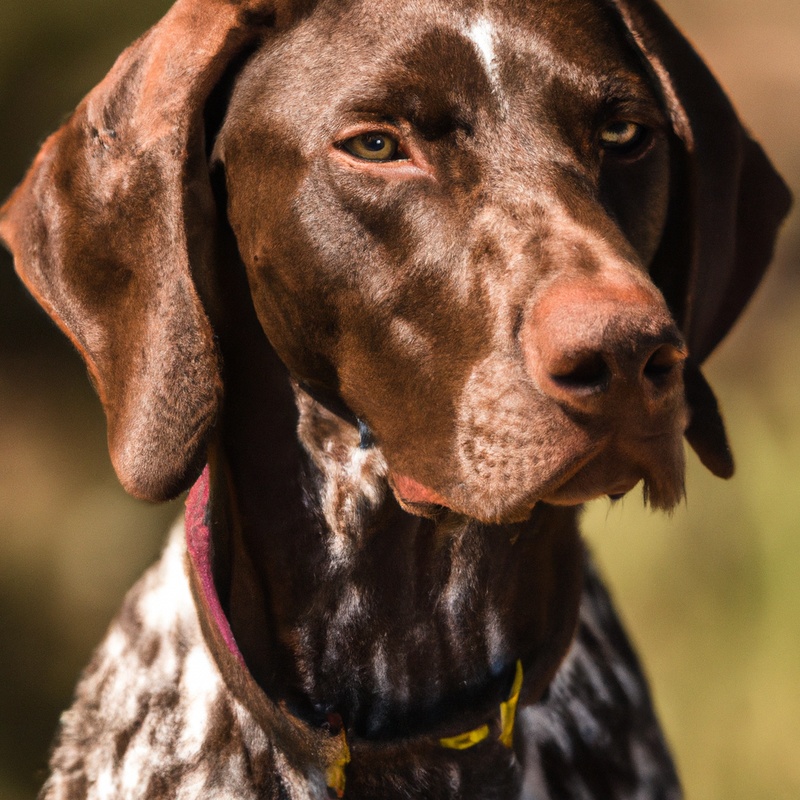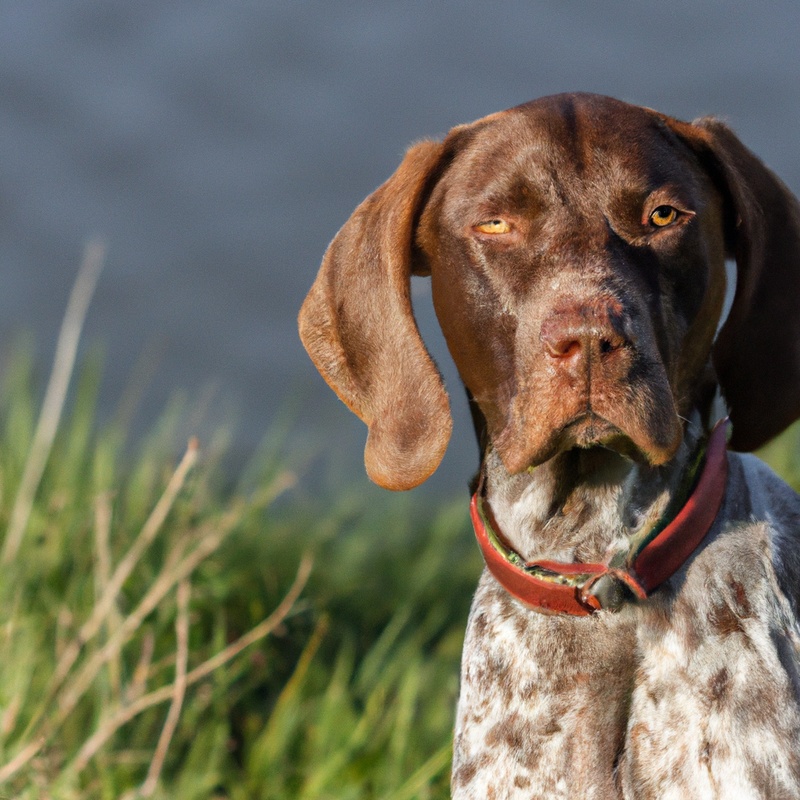Can a German Shorthaired Pointer Live In An Apartment Or Do They Need a Yard?
Key Takeaways:
- German Shorthaired Pointers can live in apartments, but they require plenty of exercise and mental stimulation.
- Providing regular exercise, such as daily walks and playtime, is crucial for a German Shorthaired Pointer living in an apartment.
- Having access to a yard is beneficial for a German Shorthaired Pointer, but it is not a strict requirement as long as their exercise needs are met.
- Apartment living with a German Shorthaired Pointer is possible, but it requires commitment to ensure their physical and mental well-being.
Can you picture a German Shorthaired Pointer thriving in a cozy apartment? Or do you envision them as free-spirited companions who thrive in wide open spaces?
As an expert in German Shorthaired Pointer breeds, I’m here to help settle this debate once and for all.
In this article, we’ll explore whether these energetic and intelligent dogs truly need a yard or if they can be perfectly happy apartment dwellers. We’ll dissect the important factors to consider, discuss how to create an enriched environment within limited space, and explore alternatives to traditional yard living.
Get ready to debunk the myths and find the perfect living arrangement for your German Shorthaired Pointer!
| German Shorthaired Pointer | |
|---|---|
| Living Situation | Apartment |
| Exercise Needs | High |
| Space Requirements | Moderate to High |
| Yard | Preferred, but not essential |
| Noise Level | Medium to High |
| Training Needs | High |
| Temperament | Active, Energetic |
German Shorthaired Pointers: Apartment Living or Yard Requirements?
Understanding the German Shorthaired Pointer Breed
Understanding the German Shorthaired Pointer Breed The German Shorthaired Pointer, or GSP for short, is a versatile and energetic breed. These dogs are known for their hunting skills, athleticism, and intelligence.
They have a strong prey drive and require plenty of mental and physical stimulation to thrive.
German Shorthaired Pointers are highly active and require regular exercise to keep them happy and healthy. They excel in various activities such as agility, tracking, and field trials.
Daily walks, playtime, and structured training sessions are essential for this breed.
In terms of temperament, the GSP is generally friendly, affectionate, and loyal. They are great family dogs and get along well with children and other pets when properly socialized.
However, they may have a strong instinct to chase smaller animals due to their hunting background.
While the German Shorthaired Pointer can adapt to apartment living, it is important to note that they thrive in homes with access to a secure, fenced-in yard. A yard provides them with the opportunity to explore and burn off excess energy.
If you live in an apartment, you’ll need to provide them with ample exercise through daily walks, trips to the dog park, or engaging activities indoors.
Assessing the Apartment Suitability for German Shorthaired Pointers
Size and Physical Activity Needs
Size and Physical Activity Needs Let’s talk about the size and physical activity needs of German Shorthaired Pointers (GSPs) when it comes to apartment living. GSPs are medium to large-sized dogs, typically weighing between 45 to 70 pounds.
They have a lean and muscular build, which means they need plenty of physical exercise to keep them happy and healthy.
GSPs are known for their high energy levels and endurance. These dogs are active and require regular exercise to burn off their energy.
Daily walks, runs, or play sessions are essential to meet their physical activity needs.
Without enough exercise, GSPs may become bored, restless, and potentially destructive. Living in an apartment doesn’t mean you can’t provide the required physical activity for your GSP.
You’ll just need to be a bit more creative.
Find nearby parks or open spaces where your dog can run and play. Regular visits to dog-friendly areas or even using a long leash for supervised play can help fulfill their exercise requirements.
Keep in mind that GSPs are not suitable for a purely sedentary lifestyle.
They thrive in active households and with owners who can dedicate time to their exercise needs. So, if you’re considering an apartment for your GSP, make sure you can commit to providing them with enough physical activity every day.
Now that we’ve covered the size and physical activity needs, let’s move on to the next aspect of assessing apartment suitability for German Shorthaired Pointers.

Important Factors for Apartment Living with a German Shorthaired Pointer
Exercise and Mental Stimulation
Exercise and Mental Stimulation are key for a German Shorthaired Pointer’s well-being, regardless of whether they live in an apartment or have access to a yard. These energetic dogs require regular exercise to stay happy and healthy.
Take them for daily walks, runs, or play fetch in a nearby park.
Additionally, engage their intelligent minds with interactive toys, puzzle games, and obedience training. Providing ample physical exercise and mental stimulation will help prevent boredom, destructive behavior, and promote a well-balanced and contented German Shorthaired Pointer.

Creating an Enriched Apartment Environment for German Shorthaired Pointers
Space Utilization and Indoor Activities
Space Utilization and Indoor Activities One of the key considerations when keeping a German Shorthaired Pointer in an apartment is how to effectively utilize the limited space available. It’s important to make the most out of every nook and cranny.
First and foremost, provide comfortable resting areas for your furry friend.
A soft bed or blanket in a quiet corner can be their go-to spot for relaxation. Create vertical spaces by incorporating tall scratching posts or cat trees.
These will not only give your German Shorthaired Pointer a place to climb and explore, but also help keep them physically active.
To keep them mentally stimulated, interactive toys and puzzle games are a great option. These will challenge their intelligence and provide entertainment even when indoors.
Indoor activities are crucial to keep your German Shorthaired Pointer engaged and satisfied.
Incorporate playtime with interactive toys, obedience training sessions, or even indoor agility exercises.
Overcoming Challenges of Apartment Living with a German Shorthaired Pointer
Neighbors and Noise Considerations
Neighbors and Noise Considerations One of the challenges to consider when living in an apartment with a German Shorthaired Pointer is how it may affect your neighbors. Since these dogs are known for their high energy levels and tendency to bark, it’s important to be mindful of the noise they may create.
First and foremost, training your German Shorthaired Pointer to minimize excessive barking is crucial.
By teaching them commands like “quiet” or “enough,” you can help control their barking behavior. Consistent and positive reinforcement during training sessions can go a long way in curbing excessive noise.
Additionally, providing proper mental and physical exercise for your dog is essential.
This breed requires plenty of daily exercise to keep them stimulated and reduce boredom, which can lead to excessive barking. Regular walks, playtime, and interactive toys can help tire them out and keep them content.
Noise disturbances can also be minimized by creating a quiet and comfortable environment for your dog.
Designate a cozy spot for them to relax and make sure they have enough mental stimulation with toys and puzzles. This can help prevent them from becoming restless and barking unnecessarily.
Lastly, open communication with your neighbors is key.
Inform them that you have a German Shorthaired Pointer and reassure them that you are taking steps to address any potential noise issues. Building a good relationship with your neighbors and being considerate can go a long way in maintaining a peaceful living environment for everyone.
Alternatives to an Apartment: Other Living Arrangements for German Shorthaired Pointers
Dog Parks and Communal Spaces
Dog parks and communal spaces are excellent alternatives for German Shorthaired Pointers who live in apartments or homes without yards. These spaces provide opportunities for your dog to exercise, socialize, and release energy in a controlled environment.
Dog parks typically offer secure fencing, ample running space, and even agility equipment for added stimulation.
Communal spaces, such as designated areas in apartment complexes, allow GSPs to meet and interact with other dogs. Remember to follow any rules or regulations, such as leash requirements, to ensure a safe and enjoyable experience for everyone.
Making the Decision: Apartment Life or Yard for a German Shorthaired Pointer
Personal Considerations and Lifestyle Assessment
So, you’re considering getting a German Shorthaired Pointer and you’re trying to figure out if they can live happily in an apartment or if they really need a yard. Well, before you make any decisions, there are a few personal considerations and lifestyle assessments you should take into account.
First and foremost, you need to consider your activity level.
German Shorthaired Pointers are highly active dogs that require a lot of exercise. If you’re someone who loves to run, hike, or spend a lot of time outdoors, then you may be able to provide them with the physical activity they need, even if you don’t have a yard.
Another thing to consider is your schedule.
These dogs thrive on human companionship and can become bored or anxious if left alone for long periods of time. If you work long hours or have a busy social life that keeps you away from home frequently, an apartment may not be the best choice for a German Shorthaired Pointer.
Additionally, think about the resources available to you.
Living in an apartment means you’ll need to find alternative options for exercise and mental stimulation. Are there nearby parks or open spaces where you can take your dog?
Can you afford doggy daycare or hire a dog walker to ensure they get enough exercise?
Lastly, consider your preferences and lifestyle. Do you enjoy spending time outside even if you don’t have a yard?
Are you willing to put in the effort to keep your apartment clean and manage any potential noise concerns with neighbors?
These are important factors to take into account when deciding on apartment living with a German Shorthaired Pointer. By assessing your own activity level, schedule, resources, and personal preferences, you’ll be better equipped to make a decision that works for both you and your future four-legged companion.

Final Verdict
German Shorthaired Pointers can indeed thrive in an apartment setting with the right provisions and care. While their size and energy levels may pose challenges, these can be overcome through regular exercise, mental stimulation, and an enriched indoor environment.
By considering factors such as space utilization, noise considerations, and alternative options like dog parks or communal spaces, apartment living can be a viable choice for this breed.
Ultimately, the decision between apartment life or a yard should be based on personal considerations and lifestyle assessment. Trust in the information presented here, backed by my expertise, and make the best choice for your German Shorthaired Pointer’s well-being.







